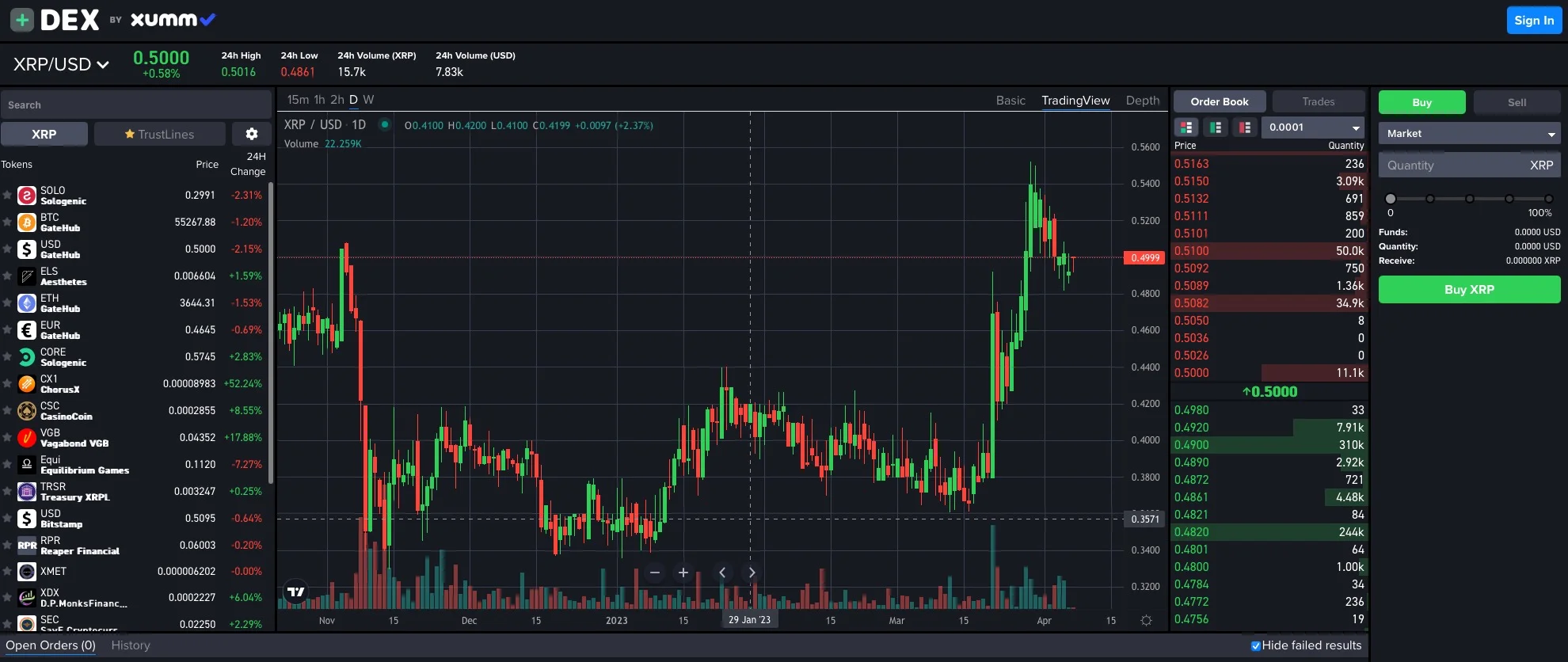Explore what is DEX with our detailed guide. Understand the key features of decentralized exchanges, their advantages and disadvantages, and popular DEX options.
As the world of cryptocurrencies continues to evolve, an increasing number of investors are exploring alternative trading platforms. One such alternative is the decentralized exchange (DEX). In this guide, we will dive deep into what is DEX and how it differs from traditional, centralized exchanges. We will also examine the benefits, drawbacks, and key features of DEXes.
What is DEX – Definition
A DEX, or decentralized exchange, is a cryptocurrency trading platform that operates without a central authority. Unlike traditional, centralized exchanges that rely on a third party to facilitate transactions, DEXes allow users to trade directly with one another. This peer-to-peer (P2P) model provides increased security, privacy, and control for users.
DEX: Key Features
Understanding what is DEX involves examining the key features that set these platforms apart from centralized exchanges:
- Decentralization: DEXes are built on blockchain technology, which ensures that there is no single point of failure. This makes them less susceptible to hacks and other security breaches.
- Custody: Unlike centralized exchanges, DEXes do not hold users’ funds. Instead, users maintain control of their assets at all times, reducing the risk of theft or loss.
- Privacy: DEXes generally do not require users to provide personal information or undergo extensive Know Your Customer (KYC) procedures, preserving their privacy.
- Transparency: All transactions on a DEX are recorded on the blockchain, ensuring that they are transparent, auditable, and resistant to manipulation.
- Permissionless: Anyone can access and trade on a DEX without the need for approval from a central authority, making them more inclusive and accessible.

Pros and Cons of Decentralized Exchanges
Before exploring the world of DEXes, it’s essential to understand the advantages and disadvantages of using these platforms:
Pros
- Security: Decentralized exchanges are less prone to hacks and security breaches due to their decentralized nature and non-custodial model.
- Privacy: Users can trade on a DEX without providing personal information or undergoing extensive KYC procedures, maintaining their privacy.
- Control: Users retain control over their assets at all times, reducing the risk of theft or loss.
- Accessibility: DEXes are open to anyone with an internet connection and do not require permission from a central authority.
Cons
- Liquidity: DEXes often have lower trading volume and liquidity compared to centralized exchanges, which can lead to price slippage and less favorable trading conditions.
- User experience: Decentralized exchanges can be more challenging to use for beginners, as they typically have less intuitive interfaces and require a deeper understanding of blockchain technology.
- Transaction speed: Due to the nature of blockchain-based transactions, DEXes can sometimes experience slower transaction speeds compared to centralized exchanges.
- Limited functionality: DEXes may not offer advanced trading features, such as margin trading or derivatives, which are commonly found on centralized exchanges.
Popular Decentralized Exchanges
Now that we understand what is DEX, let’s explore some of the most popular decentralized exchanges in the market:
- Uniswap: Built on the Ethereum blockchain, Uniswap is a leading DEX that utilizes an automated market maker (AMM) model to facilitate trades.
- XRPL DEX: The native exchange running in the XRP Ledger was the first cryptocurrency DEX in the world.
- SushiSwap: Also based on Ethereum, SushiSwap is a community-driven DEX that offers additional features, such as staking and yield farming.
- PancakeSwap: Running on the Binance Smart Chain (BSC), PancakeSwap is a fast-growing DEX that supports various tokens and offers features like staking and lotteries.
- Curve Finance: Focused on stablecoins, Curve Finance is an Ethereum-based DEX that facilitates low-slippage trades between assets with similar value.
- Balancer: Another Ethereum-based DEX, Balancer employs a unique AMM model that allows users to create customizable liquidity pools with multiple tokens.
How to Use a Decentralized Exchange
To start using a DEX, follow these steps:
- Choose a DEX: Research and select a decentralized exchange that supports the tokens you want to trade and aligns with your preferences in terms of features and security.
- Connect a wallet: You’ll need a cryptocurrency wallet compatible with the DEX you’ve chosen. Popular options include MetaMask, Xumm, Trust Wallet, and Ledger hardware wallets.
- Fund your wallet: Transfer the tokens you want to trade to your wallet. Ensure you have enough funds to cover transaction fees, which are often paid in the native token of the blockchain the DEX is built on (e.g., ETH for Ethereum-based DEXes).
- Execute trades: Navigate to the trading interface of the DEX and select the trading pair you wish to trade. Enter the desired amount and confirm the transaction.
Conclusion
Understanding what is DEX is crucial for anyone looking to venture into the world of decentralized finance. Decentralized exchanges offer numerous benefits, including increased security, privacy, and control over assets. However, they also come with certain drawbacks, such as lower liquidity and limited functionality compared to centralized exchanges. By carefully weighing the pros and cons, you can decide if trading on a DEX is the right choice for your investment strategy.